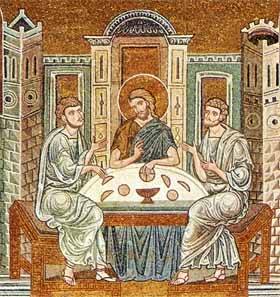From Palermo to Trapani on New Year’s Day has been delightful
– more rewarding than expected. First, I have the train almost to myself. [As
in Spain, most natives travel by bus, becsause it’s faster.] Second, it is warm
enough to open the windows on this little local train. The three-hour journey
stops everywhere and goes to the south side of the peninsula first. This gives me
a tour of the Sicilian countryside, on what turns out to be an exceptionally
fine day.
It is like Spring in early May in Mn. Clear skies with cotton-ball
clouds and rain- fresh air. The first
party of the trip, along the north coast, is spectacular – mountain after mountain,
shaped like the Rock of Gibralter, vertical cliffs rising right out of the sea.
Sicily here does not seem that poor. The stuccoed stone
houses and new apartment buildings look almost prosperous. As we turn inland, I
notice that there aren’t Any trees. Big difference from Calabria. Here, the
only trees seem to have been planted – all olives, no citrus here – and the few
pine and cedar are all around houses.
Farther south, toward Marsala, the mountains give way to a
plain with vast olive plantations and vineyards.
I think I read somewhere that they cut
down the forests centuries ago. Now there are signs of some attempt at reforestation
– but it’s mostly cultivated. It’s vivid green this time of year, but I’ll bet
its yellow and brown in the summer.
Other side of the island at dusk. Pale pink-stucco and some rather
nice looking villas by the sea.
No cabs at the station, so I walked over to the main street.
Same story, so I asked a teenaged couple, who were most helpful. The girl, who
was lovely despite her braces, did most of the talking – having claimed some
English – but the boy ran ahead, leading us back to the station, where a cab was
– rather miraculously – waiting. I shook both their hands and thanked them
profusely.
My B&B, the Alla
Marina, seems to be in medes res
– with a live jazz band playing very well outside the window in a kind of park
for welcoming tourists. The ferry wharf is across the street, and the main
street with restaurants is a block the other way. The room itself is in an old pensione-style apartment on the third
floor. It is just about perfect: high, curving ceilings, dark woodwork, antique
furniture, real fabric on the walls above the wainscoting. [Now I REALLY feel I am living in Il Gatopardo!]
Although my room looks like it was decorated by
Josiah Wedgewood, it has all the conveniences, including cable TV. Best of all,
the wi-fi and elevator actually work!
“No stairs”, however, does not translate into Italian. When I
booked the room, I made a clear note in the “special needs” box. I
received an e-mail back assuring me about the elevator. When I arrive, I found
three steps to the elevator and another three to my room! They just don’t count
here! Oh well, I didn’t make a scene, although I did mention it. “ ‘No stairs’
doesn’t mean ‘no stairs’ in Italy”, I remarked. The nice, English-speaking
owner (who lives in the first floor) laughed and agreed that it was very
difficult to avoid them.
It is a commendable place, however, and I may stay a few
extra days to chill out. It’s a good deal. @$75/day. My Eurailpass expires
today, having gone out with a whimper – no sign of a conductor on the train at
all. And we passed the airport on the way into Trapani. The bus to it leaves
from right across the street, and there is a RyanAir flight direct to Beauvais,
from which there is a shuttle-bus to Porte
Maillot.
The restaurant San
Lorenzo is a small (two-man) operation on the Corso Vittore Emanuale which is the auto-free main drag.
One again,
I seem to be right on Nicollet Mall, which is fine with me. The Sicilians,
like everybody else in this part of the world, apparently, like to walk around
slowly just after dark. I got into the restaurant at 8:30 and it was still a
bit early – even on New Year’s night.
I tried their caponata and discovered that it isn’t really a relish, but a kind
of stew of eggplants and olives, with a little tomato and herbs. [Everbody has
their own recipe.] The chef came out afterwards to ask how I liked everything,
and he also told me that he puts sugar in the caponata. I am going to have to try this at home. I mentioned
Inspector Montalbano, and he smiled – he said he knew him! I said that if
figured Trapani was Montelusa.
The pasta was a local, hand-made specialty called basiunale, which is like very thick,
twisted spaghetti – or like long, thin rotini.
Mine was a pesto of garlic and
something green (not basil) and French fries! I noticed that their salata caprese is made with oregano, not
basil. Maybe it’s too hot here for basil.
 |
Trapani seen from the west. The neck of land on the left is the old town. On the north side,
you can just make out the white hulks of the ferries and passenger ships that go to Sardinia and Tunisia |
I recommend Trapani without reservation (except that you probably have to fly RyanAir to get there). The people, architechture, food, sea and countryside are all lovely - and pretty affordable, considering what you get.










